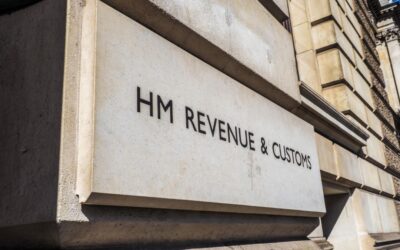Making Tax Digital Hub
Message UsMaking Tax Digital
Making Tax Digital is the biggest shake-up of the tax system in 20 years and will fundamentally change the way taxpayers report to HM Revenue & Customs (HMRC).
On this page you will find all of our articles relating to Making Tax Digital. We will continue to add further articles and guidance as details emerge from HMRC.
We are sure that you will find this page a useful point of reference during the coming months.
How will the changes impact you?
You will be required to keep all records in a digital format
You must use HMRC approved software
You will be required to submit quarterly returns
Making Tax Digital Timeline
April 2022
VAT registered businesss’s with a taxable turnover below £85,000 will be required to follow Making Tax Digital rules for their first VAT Return, starting on or after April 2022.
April 2026
Self-employed businesses and landlords with annual business or property income above £50,000 will need to follow the rules for MTD for Income Tax from their next accounting period starting on or after 6 April 2026.
April 2027
Self-employed businesses and landlords with annual business or property income above £30,000 will need to follow the rules for MTD for Income Tax from their next accounting period starting on or after 6 April 2027.
MTD rules for partnerships and corporation tax and yet to be confirmed
Frequency Asked Questions
What is Making Tax Digital (MTD) for Income Tax?
MTD requires individuals to keep accounting records in digital format and to submit tax returns using MTD compliant software.
The idea behind this is to ultimately decrease the chances of any errors that might occur. Studies have shown that the number of errors in 2018 and 2019 amounted to £8.5 billion, which were all avoidable mistakes, if the correct mechanisms were in place.
Do you have to use MTD?
Self-employed businesses and landlords with annual business or property income above £50,000 will need to follow the rules for MTD for Income Tax from their next accounting period starting on or after 6 April 2026.
Self-employed businesses and landlords with annual business or property income above £30,000 will need to follow the rules for MTD for Income Tax from their next accounting period starting on or after 6 April 2027.
Penalties of up to £3,000 may be imposed on individuals and businesses that fail to keep records digitally if they fall within MTD.
Digital start date for MTD for income tax?
Self-employed businesses and landlords that are already trading and have an income above £50,000 as of 5 April 2025 will have a digital start of 6 April 2026.
Self-employed businesses and landlords that are already trading and have an income above £30,000 as of 5 April 2026 will have a digital start of 6 April 2027.
HMRC has advised that taxpayers who fall within MTD, can start signing up for MTD from 6 April 2022 without activating any MTD obligations.
How does MTD work?
MTD for income tax will require the affected individuals to submit quarterly updates of their income and expenditure to HMRC, along with keeping digital records. A year end declaration will also be required to be submitted following the end of the year using MTD compliant software.
What is the year end declaration for MTD income Tax?
In addition to the quarterly updates, HMRC will also require an end of year return. So, all self employed individuals and landlords will submit
annual statements which will include any tax adjustments such as disallowable expenditure, and, claims for allowances and reliefs. The
deadline for this statement will be the same as Self-Assessment, being 31 January following the tax year end.
Can I voluntarily register for MTD now?
HMRC has opened voluntary registration under a pilot scheme from 9 December 2021. On the basis that the participants do not have any other sources of income apart from either self-employment or property income.
Voluntary registration cannot take place if the participants were in receipt of any COVID – 19 grants such as self – employment support scheme (SEISS), coronavirus job retention scheme (CJRS) and eat out to help out scheme.
Case Studies
Our Making Tax Digital experts

Stephen Charles
Tax Partner

Paul Wormald
Partner

Aaron Hemmington
Tax Partner

Craig Walker
Tax Director
This site is protected by reCAPTCHA and the Google
Privacy Policy and
Terms of Service apply.
Making Tax Digital News
Tax Rates and Allowances 2023/24
Introduction We have summarised the key rates and allowances which are fundamental to our business and personal lives. We are sure that you will find them a useful point of reference and have set out below a few examples of how they can be used. Personal tax rates As...
HMRC delay Making Tax Digital by two years
What is being delayed? HMRC has announced that plans to implement digital tax reporting for unincorporated businesses and self-employed individuals and landlords in April 2024 will be delayed until April 2026. Why has MTD been delayed? HMRC have said that businesses...
Autumn Statement 2022 – key tax announcements
The Chancellor, Jeremy Hunt, has given his first Autumn Statement. We have highlighted below some of the key tax announcements made by the Chancellor: Personal tax thresholds The Chancellor has announced that personal tax thresholds will be frozen for a further...



